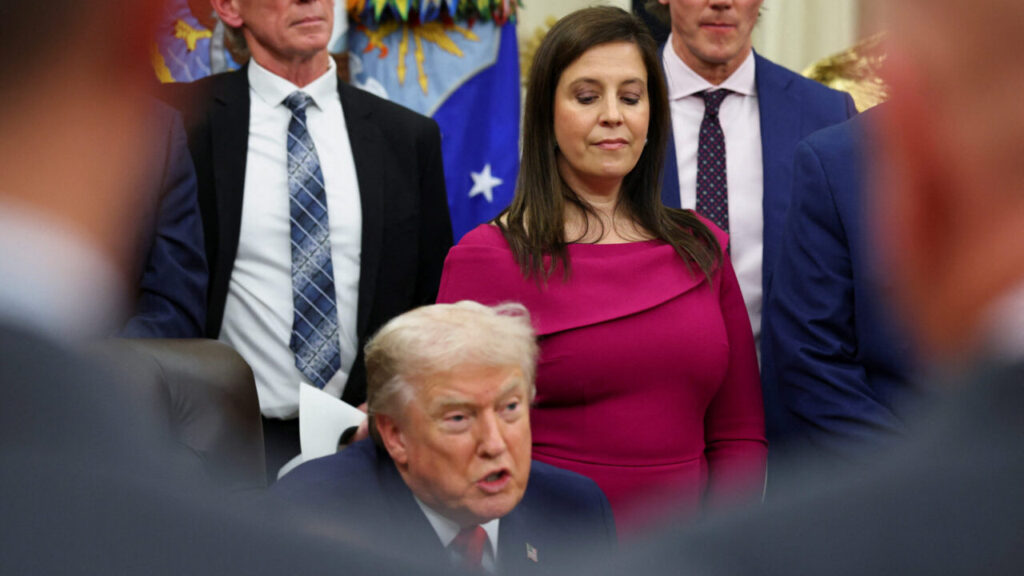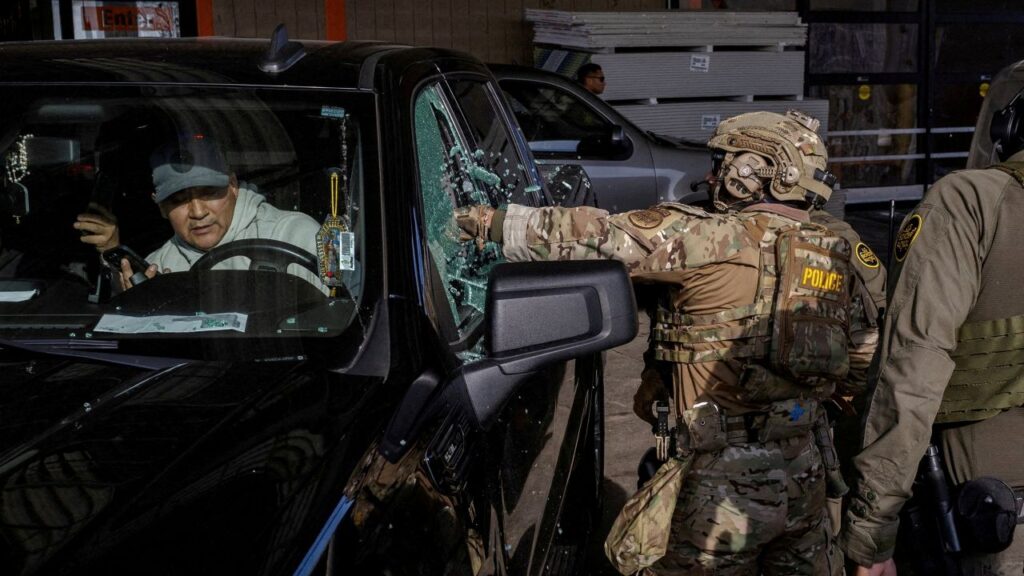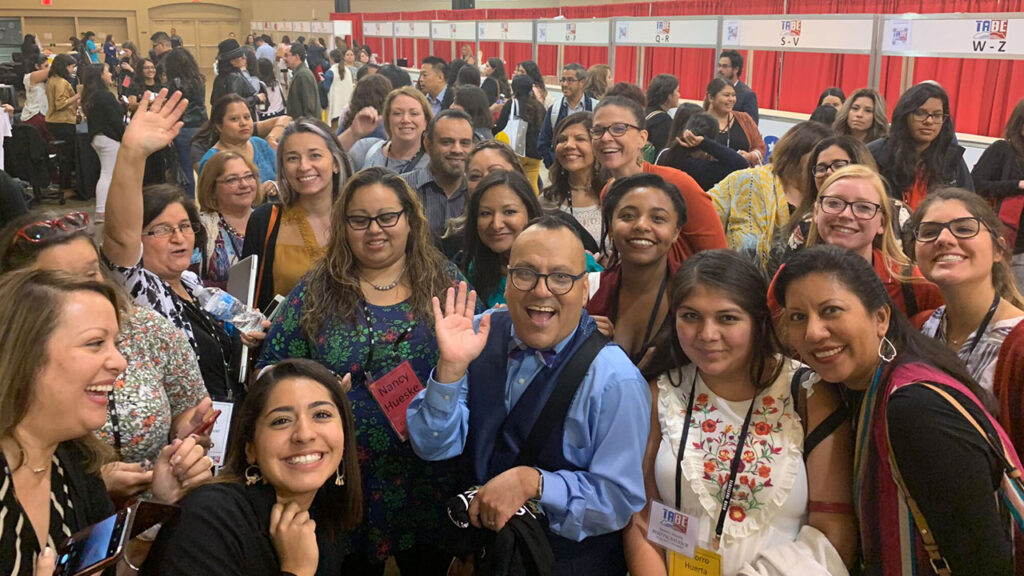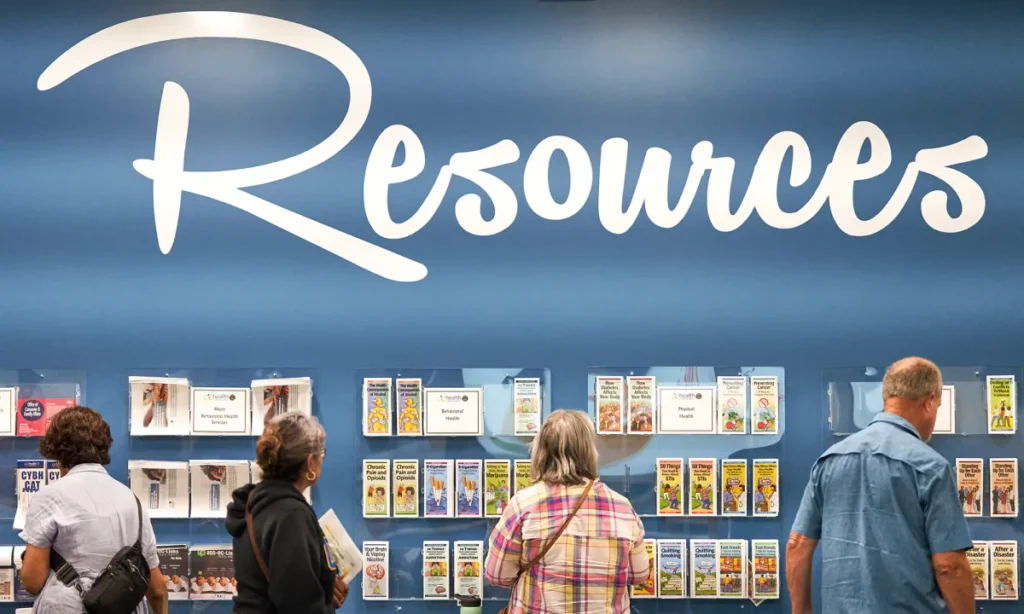Share
Amanda Caballero wishes she could go back to work at Amazon.
She made $15 an hour at the Fresno fulfillment center — several dollars more than the state’s minimum wage — and received more than three months of paid maternity leave. Her generous health insurance package covered her husband and five children, and she liked her managers.

Manuela Tobias
The Fresno Bee
Standing on a two-step ladder during her Amazon shift last March, she was struggling to get a heavy box out of a cubby. She re-gripped the box and tugged, but her glove was stuck under the box. As she pulled, her hand stayed in place, straining her wrist, her medical records show.
She recently stopped receiving worker’s compensation payments and doesn’t qualify for any available jobs, Amazon or otherwise, from nurse’s assistant to retail cashier, because she can’t lift even a gallon of milk. The family now depends on her husband’s income as a security guard, help from their family, and food stamps. Despite weeks of physical therapy, it’s unclear when her wrist will heal.
Caballero’s injury was one of 307 injuries and illnesses recorded at the Fresno fulfillment center between June 2018, when it opened, and May 2019, according to federal Occupational Safety and Health Administration records.
In 2018, the Fresno warehouse’s rate of serious injuries — those that require job restrictions or days off work — was nearly 12 injuries per 100 workers. That was nearly three times the national warehouse industry average last year, and more than double the statewide industry average, according to OSHA records obtained by the Reveal Reporting Networks.
The injury rate in Fresno ranked tenth among 28 Amazon warehouses nationwide for which Reveal from The Center for Investigative Reporting obtained 2018 records. It ranked third among California Amazon warehouses.
The center, among the top corporate employers in the county, employs more than 2,500 people.
The Fresno Bee spoke with more than a dozen Amazon workers, four of whom were injured and agreed to go on the record. They said the job was great, as were the pay and benefits. But they said injuries at Amazon were crippling in more ways than one.
The workers described a stressful work environment, where they had to keep a breakneck pace or face write-ups from supervisors. They feared taking bathroom breaks or time off over injuries or illness because they said they felt doing so would put their jobs at risk. They also said they feared or were discouraged from filing injury reports, which indicates that official rates may be undercounted.
The vast majority of injuries were described on OSHA reports as sprains and strains to the back, wrist, shoulder, and ankles. The remaining workers sustained bruises, fractures or smash injuries, like crushed toes, or skin irritations. The workers interviewed by The Bee reported mostly sprains and strains due to repetitive motions.
While they were made to stretch before work and lunch, and micro stretch throughout the day, employees said repeating the same motion over and over wore on their muscles and ligaments.
Some who were hurt on the job said they struggled to get and keep workers’ compensation, and still feel the physical effects of their injuries months after their benefits ended.

Amazon Responds
In an emailed statement to The Bee, an Amazon spokesperson said their injury rates appear high because the company is aggressive about recording injuries, regardless of whether they are work-related. Amazon said they believe others in the industry dramatically under-report.
The company added that training and protocols to ensure safety are ubiquitous at Amazon. The company has spent over $55 million on capital investments specific to safety improvements, they wrote. For example, supervisors are supposed to track and audit progress on reducing physical risk, and every associate is asked to fill out a monthly safety survey.
Caballero doesn’t blame Amazon.
The job was the best she’s had, and a rigorous set of safety guidelines existed, including mandated daily stretching. But she believes supervisors were under such high pressure to meet quotas they encouraged workers to do anything for the job, regardless of the physical toll.
“They knew what was happening and they just let it happen,” Caballero said.
Amazon said they have never heard of supervisors encouraging teams to bypass safety guidelines to meet quotas.
“Like most companies, we have performance expectations for every Amazonian — be it corporate employee or fulfillment center associate and we measure actual performance against those expectations,” the spokesperson wrote. “Associate performance is measured and evaluated over a long period of time as we know that a variety of things could impact the ability to meet expectations in any given day or hour.”
A Big Win for Fresno
At 855,000 square feet, Amazon’s fulfillment center in Fresno spans about 14 football fields. It runs 24 hours a day and utilizes hundreds of robots.
A machine illuminates for workers like Caballero what items to grab from cubbies or bins, and where to place them. Robots resembling automatic vacuum cleaners underneath shelves whisk items across the floor. More than 10 miles of conveyors virtually fly packages from one end of the warehouse to another. Computers scan open-faced cubbies and packages winding their way through the warehouse decipher whether a package is on the right track.
The city spent more than $1 million in broadband installation, expanded roads leading to the warehouse and modified bus routes, according to Fresno City Councilmember Luis Chavez, a vocal supporter of Fresno’s Amazon deal.
To qualify for the incentives, hard-capped at $30 million over 30 years, Amazon agreed to provide 750 new full-time jobs at the center throughout that time period.
Amazon committed to a $53 million investment in the city, county and Fresno Unified School District over 30 years. Since opening, Amazon has donated $15,000 to Fresno Unified School District to support STEM and robotics education for more than 600 local students and $25,000 to the nonprofit WestCare Homeless Alleviation, the company said.
In addition to a $15 minimum wage, Amazon offers employees comprehensive medical, vision and dental benefits, as well as a 401k plan with a 50% company match. Employees on maternity or family leave receive up to 20 weeks of paid leave. Amazon also offers nearly full tuition for employees to go back to school in high-demand fields, they said.
Chavez said Amazon’s presence has forced other warehouses, like Kraft and OK produce, to raise hourly wages by $2 or $3 in order to compete. It also put Fresno on the map for other companies, he said.
“Now that Amazon and Ulta came, there’s been a lot of interest in other companies coming to Fresno, and I think that’s been a big plus for the city of Fresno to provide more jobs for the community,” Chavez said.
However, he added the city needs to dig deeper to learn why the injury rate is “abnormally high.”
“To have 12 out of 100 employees to be injured in that span is really high,” Chavez said. “Our goal should not be the state or the national average, it should be well below that.”
In an emailed statement to The Bee, Brand said he couldn’t speak about the company’s workplace injuries, but said worker safety in general was a basic expectation.
“Since their e-commerce center opened in 2018, Amazon has had a positive effect on our community as well as our economy, providing thousands of good-paying jobs that helped Fresno achieve record-low unemployment and bring opportunity and advancement for Fresno families,” Brand said.
He added regulatory agencies like Cal/OSHA closely monitor and enforce worker safety.
“I expect every business in Fresno to not only comply with worker safety laws, but also to value their employees. Given what Amazon has done for their employees with benefits and education incentives, I expect that they also take workplace safety very seriously.”
Fear Over Reporting Injuries
In most cases, workers said they were scared to report injuries to their supervisors. When they did, they said they felt discouraged from filing formal injury reports.
Caballero feared reporting her injury because she had heard from her coworkers it could result in being passed up for a promotion. She told her manager anyway, when she could no longer work with her right hand.
“I didn’t really want to have a report written for my injury and get treated differently,” she said.
Tambra Recek, 33, said she injured her back lifting boxes at the warehouse and the pain drove her to tears. At Amcare, the in-house first aid facility, she said she was told she would have to clock out to see a doctor. She still has not seen a doctor to diagnose her injury because she has no health care.
“I can’t afford to not get paid. I have kids,” Recek said. “Finally I said, you know what, I’m fine. I’m fine. They asked, ‘Do you want to drop the case?’ So I signed those papers saying that you don’t want to go further. But you still have to pack. You still have to go fast and it’s hard when you’re in a lot of pain.”
Kelly Hoffman, a 40-year-old mother of four, said she was injured three times before she reported it because she was scared of losing her livelihood.
First, she said a box fell on her shoulder. Then, she pulled a muscle reaching for a box in a cubby. In January, her wrists began aching, but she said she only let her supervisors know months later.
Her husband, Keith, said he was picking up a flat of energy drinks from a bin to scan and put into a tray when he felt his back pop in July. When a manager took him to Amcare during a break, he urged her to come along because she kept rubbing her wrist.
In their emailed response, Amazon officials said the health and safety of associates is their top priority and they “support employees when they have personal obligations, health matters or other life events that require support.” The company declined to discuss individual complaints to respect the privacy of employees, but said they have zero tolerance for retaliation for employees who raise concerns.

Seeking Care
Hoffman had her wrist wrapped and returned to work. She went to the doctor the next day because she learned the tightly wrapped bandage was constricting her nerves, worsening the injury. She was diagnosed with carpal tunnel syndrome in both wrists.
“Patient may have a baseline narrowed canal, which was aggravated by the repeated work she does at Amazon,” her medical records say.
Keith, 43, was sent to the doctor, who later found a mild disc bulge and a narrowing between two of his vertebrae, his records show.
Both were taken out of work and put on worker’s compensation, receiving around $800 every two weeks.
They said there was no Ibuprofen at the clinic nor in the vending machine in the break room.
“It’s always gone because everyone goes to work sick there because you never have time,” Keith said. “I can’t tell you how many times I saw somebody throwing up in a garbage can there because they don’t want to get fired for missing work.”
While Amazon declined to comment on specific incidents, they said onsite medical representatives “follow clear, established company guidelines for first aid treatment in accordance with local, state, and federal regulations.”
They added no associate should ever be discouraged from seeking care. Employees receive up to five weeks of time off a year and full health benefits starting on day one.
A Stressful Work Environment
Recek, the mother of two who threw out her back in March, remembers being under constant stress. The loud, steady hum from machinery and loud fans buzzed in her ear during the 10-hour shifts, with no respite. (Phones are not allowed on the floor.) She said she always felt watched by supervisors who stood on elevated platforms overlooking work stations.
If she went to the bathroom, which was about half a block and two flights of stairs from her station, she would be asked why she had taken so long off-task.
Amazon countered that every employee has quick, easy access to bathrooms and is allowed to use them freely.
In April 2019, Recek broke down while packing boxes.
“I don’t know what triggered it. I was standing there. Somebody was talking to me and I blacked out. I was bent over the counter and I just was stuck. They said they were talking to me and I wasn’t replying. My manager came over and said what happened? I said huh? I didn’t remember.”
Hoffman and her husband also lost their health insurance, with no prior notice, when their short-term disability ended in December. They both suffer from high blood pressure, and have three kids on their health insurance, so they worry about what they will do when they run out of medicine or their kids need to see their eye doctor.
“We busted our butts for these people and that’s the pay we get, is losing our benefits — while we’re injured —because of them,” Keith said.
‘I Would Do It Again’
In spite of high injury rates, most of the workers interviewed said they enjoyed their jobs, and would go back if they could.
“The opportunities are endless when it comes to working with Amazon,” said Ivan Agcaoili, a process assistant at Amazon who did not suffer any injuries. “As long as you keep your head down, you work hard, you learn the process to understand everything, you’re good to go. It’s kind of a contagious thing.”
“I would go back,” said Bedolla, the mother of five who hurt her wrist. “The insurance alone has great benefits for my kids. What I paid there for our entire family, my husband paid for him and one of our kids. So it’s a big difference.”
Hoffman and her husband could barely make it outside for a cigarette on their breaks, so they still feel grateful the job helped them quit smoking.
“I would do it again. I really would,” Keith said. “But it’s really strenuous work so it does wear on you.”
About the Author
This story by Fresno Bee journalist Manuela Tobias was completed with information from Reveal’s Reporting Networks. It is part of The California Divide, a collaboration among newsrooms examining income inequity and economic survival in California.



















